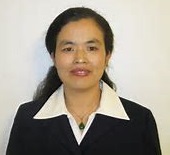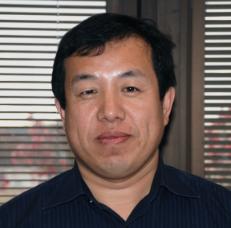Enhanced Oil Recovery or EOR is a series of technologies that are used to improve amount of oil that can be recovered from oil bearing formations. Oil can be extracted in three phases: primary recovery, secondary recovery and tertiary recovery. During primary recovery, natural drive energy will be used, including natural aquifers influx, solution gas, gas cap, gravity drainage, or a combination of these drive energies. Secondary recovery process involves injection of water or gases to maintain/raise reservoir pressure. Primary and secondary recovery processes are known leaving two thirds of original oil in place (OOIP) underground. The remaining oil is located in non-accessible reservoir regions or pores due to capillary pressure and wettability issues. Tertiary recovery process, also called EOR, is to recover the remaining oil using variation of injection agents.
EOR methods are classified into gas-based EOR (e.g., miscible and immiscible gases), water-based EOR (e.g., alkaline, surfactant, polymer, miceller, low salinity water, and combination of them), thermal-based EOR (e.g., steam, in-situ combustion, hot water, electrical heating), and other methods.
The oil & Gas industry and academic have been developing and applying varied EOR technologies to improve oil recovery. Many successful stories have been reported via technical reports, technical papers, EOR surveys, and variety formats of project logs/records. These reported EOR stories provide valuable information regarding to the applicability of EOR methods for a particular reservoir type, and reveal the influential factors on the ultimate oil recovery when a certain type of EOR is applied. Past experience could provide valuable analogous comparison and analysis for EOR selection of a future reservoir. That would save time, cut cost, and reduce the development cycle of a future mature oilfield.
EOR Data Group at Missouri S&T aims to collect past EOR experience revealed in laboratory experiments, pilot tests, and field applications, construct comprehensive databases for each EOR type, employ variety of data analytical methods (e.g., basic and advanced statistics, data mining, data quality mining, artificial intelligence) to analyze these EOR data, and extract and/or quantify hidden knowledge based on particular EOR drive mechanisms. The ultimate goal is to provide some practical guidelines in selection of EOR type, even some operational parameters for a particular reservoir condition.
Our team has been collecting EOR project (e.g., lab experiments, pilot tests, and field applications) based on biannual EOR survey published through Oil and Gas Journal, technical reports and papers from Socoiety of Petroleum Engineers (SPE) and other journals and conferences. Significant appreciation goes to these resources. We also developed a mechanism that you can contribute your EOR project data so we can have a updated EOR databases, and provide closer analysis. Privacy of your data will be respected, you as the owner of your data can choose the levels of exposure at your comfort. If you have the intention or questions, please contact the principle investigators Drs. Wei and Bai. Their contact information is provided here.
EOR methods are classified into gas-based EOR (e.g., miscible and immiscible gases), water-based EOR (e.g., alkaline, surfactant, polymer, miceller, low salinity water, and combination of them), thermal-based EOR (e.g., steam, in-situ combustion, hot water, electrical heating), and other methods.
The oil & Gas industry and academic have been developing and applying varied EOR technologies to improve oil recovery. Many successful stories have been reported via technical reports, technical papers, EOR surveys, and variety formats of project logs/records. These reported EOR stories provide valuable information regarding to the applicability of EOR methods for a particular reservoir type, and reveal the influential factors on the ultimate oil recovery when a certain type of EOR is applied. Past experience could provide valuable analogous comparison and analysis for EOR selection of a future reservoir. That would save time, cut cost, and reduce the development cycle of a future mature oilfield.
EOR Data Group at Missouri S&T aims to collect past EOR experience revealed in laboratory experiments, pilot tests, and field applications, construct comprehensive databases for each EOR type, employ variety of data analytical methods (e.g., basic and advanced statistics, data mining, data quality mining, artificial intelligence) to analyze these EOR data, and extract and/or quantify hidden knowledge based on particular EOR drive mechanisms. The ultimate goal is to provide some practical guidelines in selection of EOR type, even some operational parameters for a particular reservoir condition.
Our team has been collecting EOR project (e.g., lab experiments, pilot tests, and field applications) based on biannual EOR survey published through Oil and Gas Journal, technical reports and papers from Socoiety of Petroleum Engineers (SPE) and other journals and conferences. Significant appreciation goes to these resources. We also developed a mechanism that you can contribute your EOR project data so we can have a updated EOR databases, and provide closer analysis. Privacy of your data will be respected, you as the owner of your data can choose the levels of exposure at your comfort. If you have the intention or questions, please contact the principle investigators Drs. Wei and Bai. Their contact information is provided here.

Dr. Mingzhen Wei
Assistant Professor
Petroleum Engineering
McNutt Hall 330
Email: weim@mst.edu
Phone: 573-341-4657

Dr. Baojun Bai
Professor
Petroleum Engineering
McNutt Hall 106
Email: baib@mst.edu
Phone: 573-341-4016


